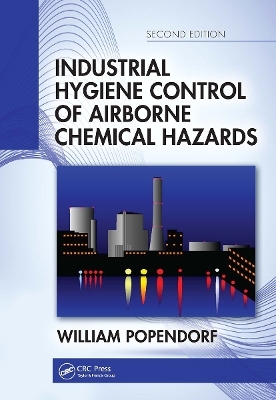
Industrial Hygiene Control of Airborne Chemical Hazards, Second Edition
CRC Press (Verlag)
978-1-032-91777-1 (ISBN)
Are you a practicing occupational hygienist wondering how to find a substitute organic solvent that is safer to use than the hazardous one your company is using? Chapter 6 is your resource. Are you a new hygienist looking for an alternative technology as a nonventilation substitute for an existing hazard? Chapter 8 is your resource. Are you looking for an overview of ventilation? Chapters 10 and 11 are your resource? Are you an industrial hygiene student wanting to learn about local exhaust ventilation? Chapters 13 through 16 are your resource. Are you needing to learn about personal protective equipment and respirators? Chapters 21 and 22 are your resources. This new edition brings all of these topics and more right up-to-date with new material in each chapter, including new governmental regulations.
While many of the controls of airborne hazards have their origins in engineering, this author has been diligent in explaining concepts, writing equations in understandable terms, and covering the topics of non-ventilation controls, both local exhaust and general ventilation, and receiver controls at the level needed by most IHs without getting too advanced. Taken as a whole, this book provides a unique, comprehensive tool to learn the challenging yet rewarding role that industrial hygiene can play in controlling airborne chemical hazards at work.
Most chapters contain a set of practice problems with the solutions available to instructors.
Features
Written for the novice industrial hygienist but useful to prepare for ABIH certification
Explains engineering concepts but requires no prior engineering background
Includes specific learning goals that differentiate the depth of learning appropriate to each topic within the fuller information and explanations provided for each chapter
Contains updated governmental regulations and abundant references
Presents a consistent teaching philosophy and approach throughout the book
Deals with both ventilation and non-ventilation controls
William Popendorf is an Emeritus Professor of Industrial Hygiene at Utah State University. Dr. Popendorf has taught and conducted research for over forty-five years, published more than 75 papers and book chapters on airborne and dermal hazards, has consulted with numerous industrial clients and government agencies, and been on the Board of the American Industrial Hygiene Association and the American Board of Industrial Hygiene. His broad interest has been to develop and apply predictive models (many developed in other fields) that describe how physical mechanisms cause (and can be used to control) exposures of workers to toxic chemicals, with the goal of improving the overall practice and knowledge-base of industrial hygiene.
An Introduction to Industrial Hygiene Chemical Hazard Control. Basic Gas and Vapor Behavior. Basic Aerosol Behavior. Chemical Exposure Control Criteria. Vapor Generation and Plume Behavior. Vapor Pressure from Mixtures. Changing the Workplace. Source Control Via Substitution. Other Source and Non-Ventilation Pathway Controls. An Overview of Local Exhaust Ventilation. Ventilation Flow Rates and Pressures. Measuring Ventilation Flow Rates. Selecting and Designing Local Exhaust Hoods. Predicting Pressure Losses in Ventilation Systems. Exhaust Air Cleaners and Stacks. Ventilation Fans. Ventilation Operating Costs. Local Exhaust Ventilation System Management. General Ventilation and Transient Conditions. General Ventilation in Steady State Conditions. Administrative Controls and Chemical Personal Protective Equipment. Respirator Controls. Appendix A VHRs for Volatile Chemicals Listed Alphabetically. Appendix B VHRs for Volatile Chemicals Listed by Hazard. Appendix C AHDD and ACDD Values for Selected U.S. Cities.
| Erscheinungsdatum | 16.10.2024 |
|---|---|
| Zusatzinfo | 332 Illustrations, black and white |
| Verlagsort | London |
| Sprache | englisch |
| Maße | 178 x 254 mm |
| Gewicht | 1324 g |
| Themenwelt | Naturwissenschaften ► Chemie ► Technische Chemie |
| Technik ► Bauwesen | |
| Wirtschaft | |
| ISBN-10 | 1-032-91777-6 / 1032917776 |
| ISBN-13 | 978-1-032-91777-1 / 9781032917771 |
| Zustand | Neuware |
| Informationen gemäß Produktsicherheitsverordnung (GPSR) | |
| Haben Sie eine Frage zum Produkt? |
aus dem Bereich


